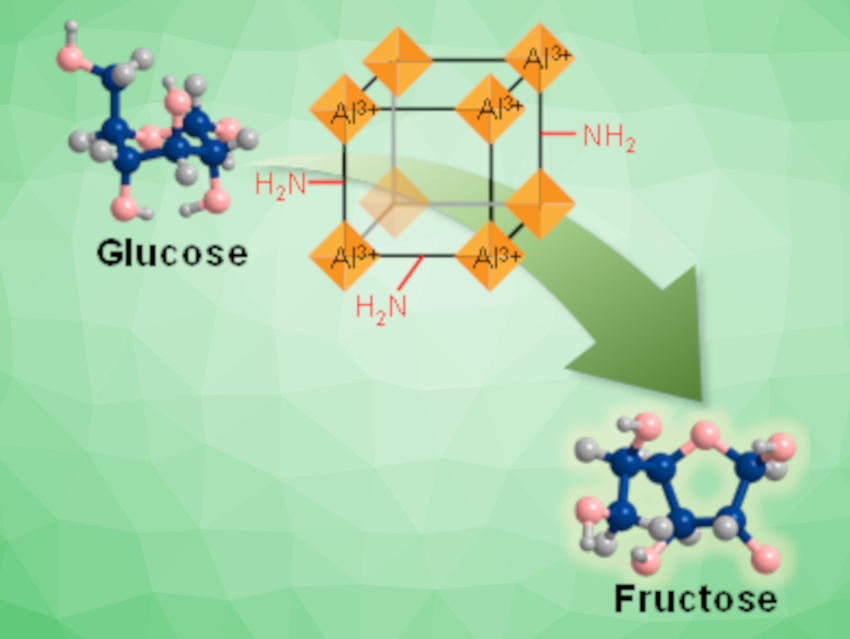Fructose is a renewable precursor for the production of foods and chemicals. In industry, fructose is produced by converting glucose (from renewable lignocellulose) using the enzyme glucose isomerase. The enzyme is selective for fructose, but difficult to recycle and active only within narrow ranges of temperature and pH. Therefore, inexpensive, selective, and reusable non-enzyme catalysts for the isomerization of glucose to fructose would be useful.
Noppadon Sathitsuksanoh, University of Louisville, KY, USA, and colleagues have developed aluminum-containing metal-organic frameworks (Al-MOFs) as catalysts for glucose isomerization. The team synthesized three Al-MOFs, called MIL-101(Al)-NH2, MIL-53(Al)-NH2, and MIL-53(Al), via solvothermal methods, using 2-aminoterephthalic acid or 1,4-benzenedicarboxylic acid as linkers. Coordinatively unsaturated metal sites of the Al-MOFs act as Lewis-acidic sites responsible for glucose isomerization.
The team found that the presence of amino groups in the MOF enhances the Lewis acid strength and provides high fructose selectivity at high glucose conversion. The amino-functionalized MIL-101(Al)-NH2 achieved 64 % fructose selectivity at 82 % glucose conversion and 120 °C. This MOF catalyst retained its catalytic performance after reusing it four times. The work indicates that Al-MOFs could be useful for the production of fructose from renewable glucose in biorefineries.
- Aluminum‐containing metal‐organic frameworks as selective and reusable catalysts for glucose isomerization to fructose,
Mohammad Shahinur Rahaman, Sarttrawut Tulaphol, Md. Anwar Hossain, Jacek B. Jasinski, Shashi Lalvani, Mark Crocker, Thana Maihom, Noppadon Sathitsuksanoh,
ChemCatChem 2022.
https://doi.org/10.1002/cctc.202200129




